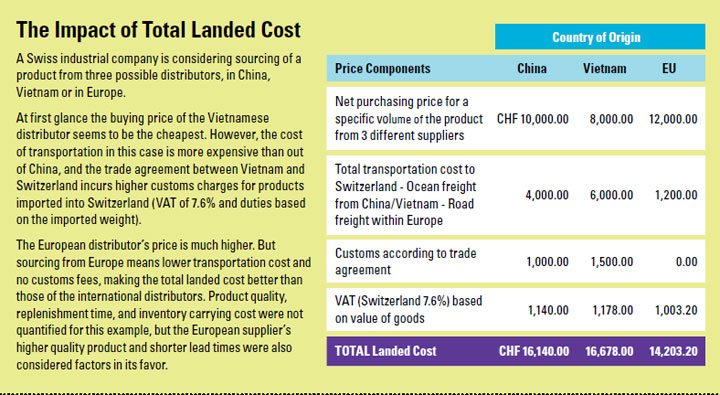SCDigest Editorial Staff
| |
SCDigest Says: |
| |
 A not obvious result from TLC excellence is that its calculation can also help build a solid business case to justify to management decisions that appear to increase transactional or functional costs but actually minimize TLC. A not obvious result from TLC excellence is that its calculation can also help build a solid business case to justify to management decisions that appear to increase transactional or functional costs but actually minimize TLC.

Click Here to See Reader Feedback
|
In an era of extreme globalization, accurate calculation of total landed costs (TLC) should be an essential competence for almost any supply chain organization, certainly those that source products globally.
Yet, the practice of total landed cost calculation is still fairly immature, according to the 2010 Third Party Logistics Study.
The study, now in its 15th year, is led by Dr. John Langley of Georgia Tech, the consultants at Capgemini, and participants from other sponsors of the report. Last week, SCDigest provided an overall summary and review of the 2010 report, released as always at the annual CSCMP conference, this year two weeks ago in San Diego. (See Review of the 2010 3PL Study.) This week, we summarize a special focus section in the report on total landed costs.
The concept of TLC is well understood, but we liked this definition from the report: the sum of all costs associated with making and delivering products to the point where they produce revenue. So, for example, with this definition, the TLC calculation for a consumer goods company would generally end at a company's distribution center, as retailers are billed (produce revenue) when the company ships products from its DC.
The definition may work less well for retailers and some others, however, as in retail the point of revenue is the store shelf, and it may not make sense to track total costs all the way to the store shelf for a given analysis of alternative suppliers (e.g. just to the retailer DC.)
Whatever definition is used, the report provides a very simple case study to show the impact of accurate total landed cost calculation in terms of decision-making. As can be seen in the graphic below, taken from the report, in this particular example (which appears to be based on a real case study), what initially appears like the smart decision to go to Asia for product sourcing winds up changing to a European sourcing strategy when the full TLC is considered.

Source: 2O010 3PL Study
"Total landed cost is an attractive metric because it enables companies to capture both obvious and hidden costs associated with product movement, revealing the true cost of sourcing and logistics decisions," the report notes, citing the obvious benefits to decision-making from getting TLC costs correct. A not obvious result from TLC excellence is that its calculation can also help build a solid business case to justify to management decisions that appear to increase transactional or functional costs but actually minimize TLC.
However, the challenges are many. The report says that " Difficulty in defining all of the factors contributing to total cost, and then obtaining all of that data, can be challenging. Because of that, too many businesses rely on partial data or inaccurate estimates that can lead to incorrect results."
(Distribution Article - Continued Below)
|